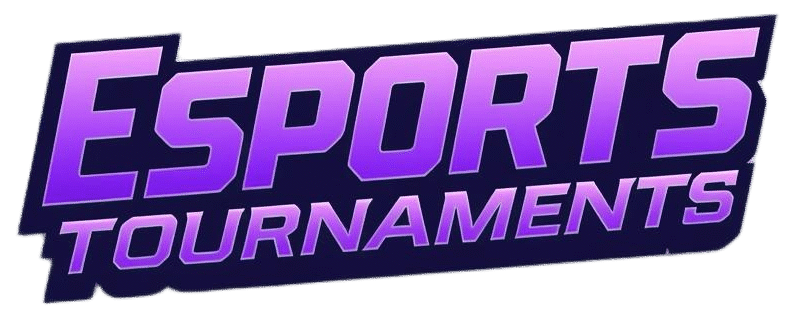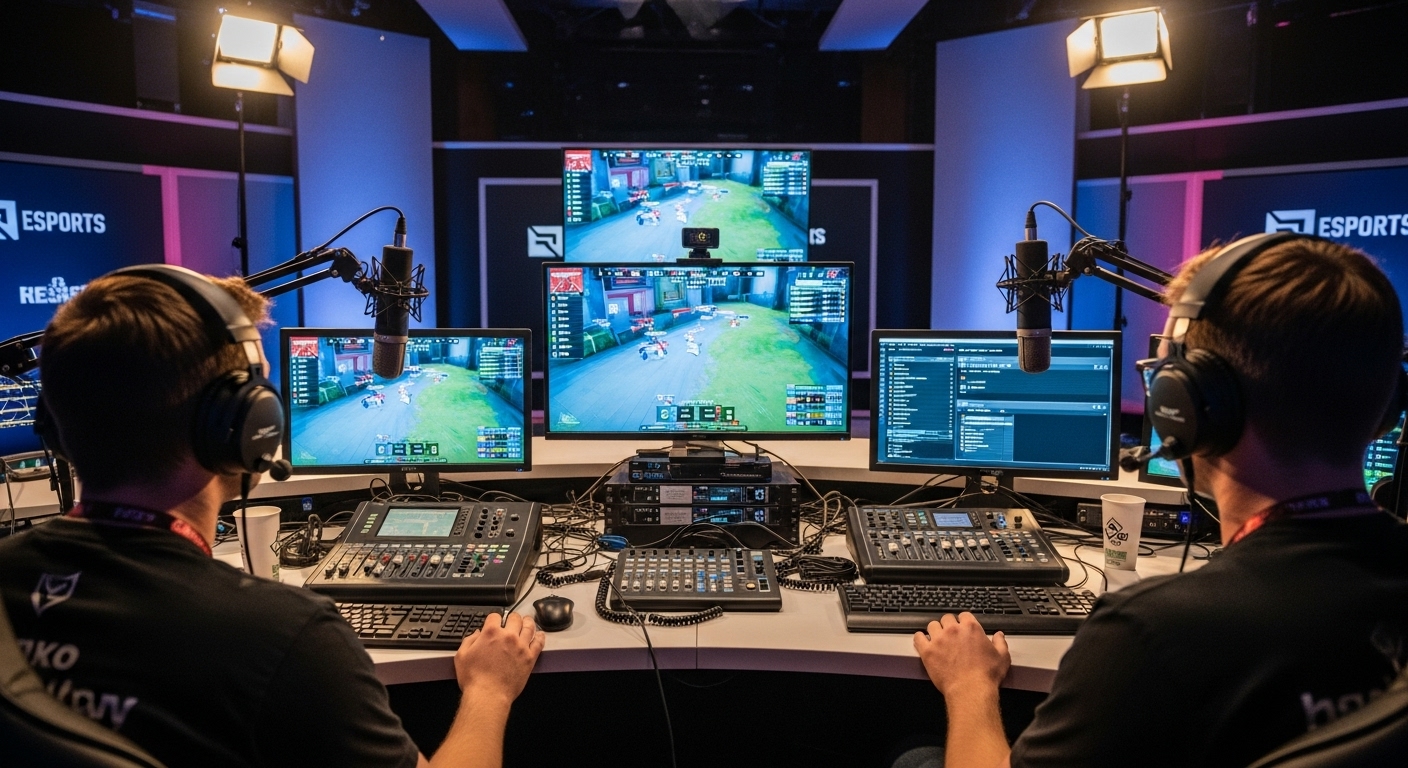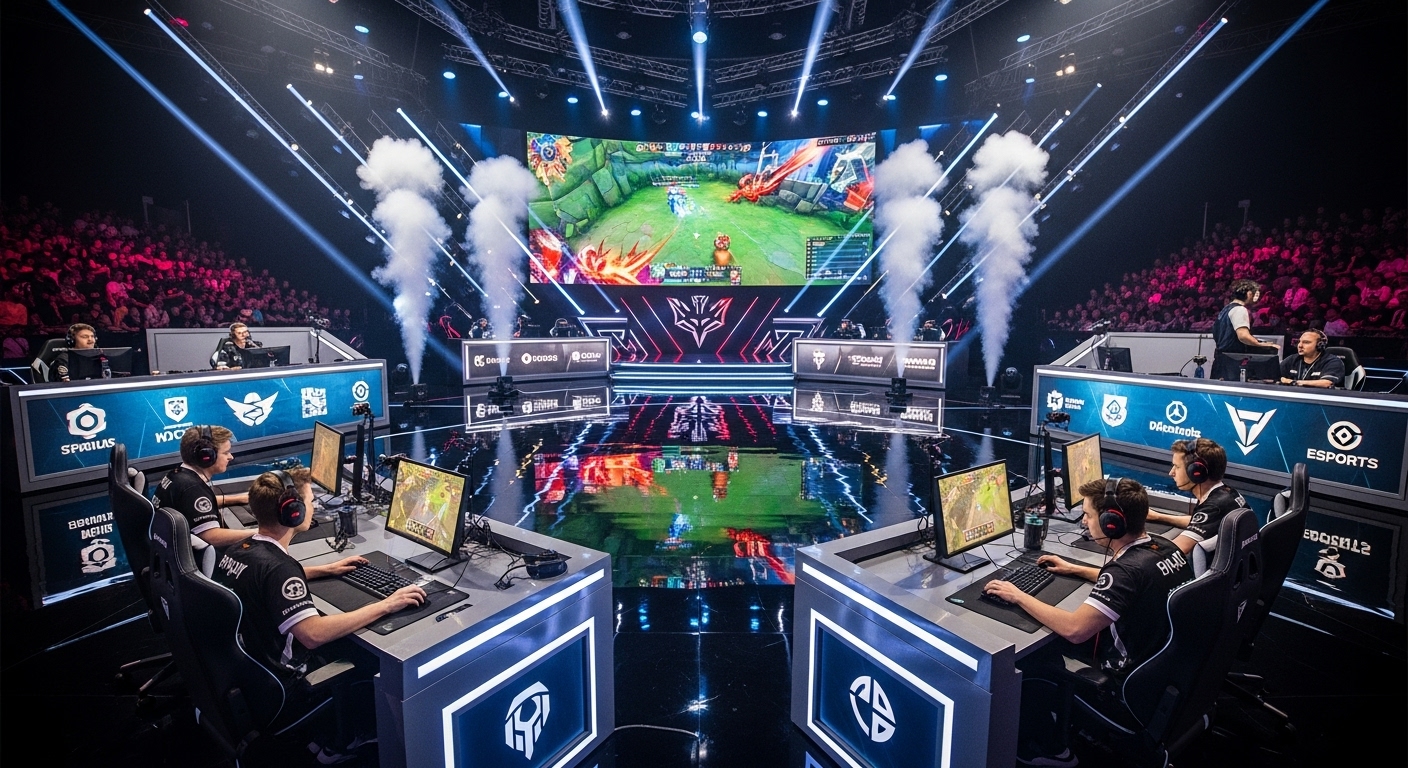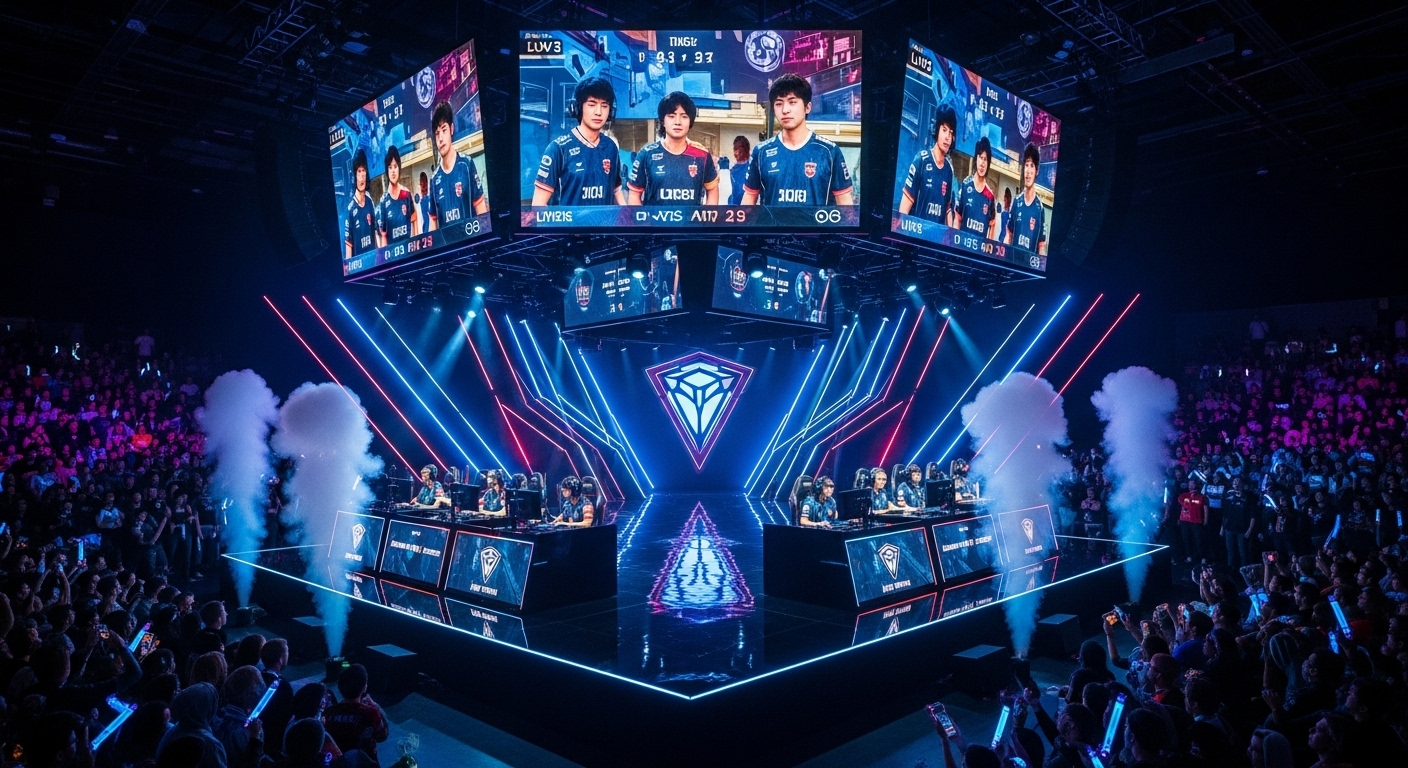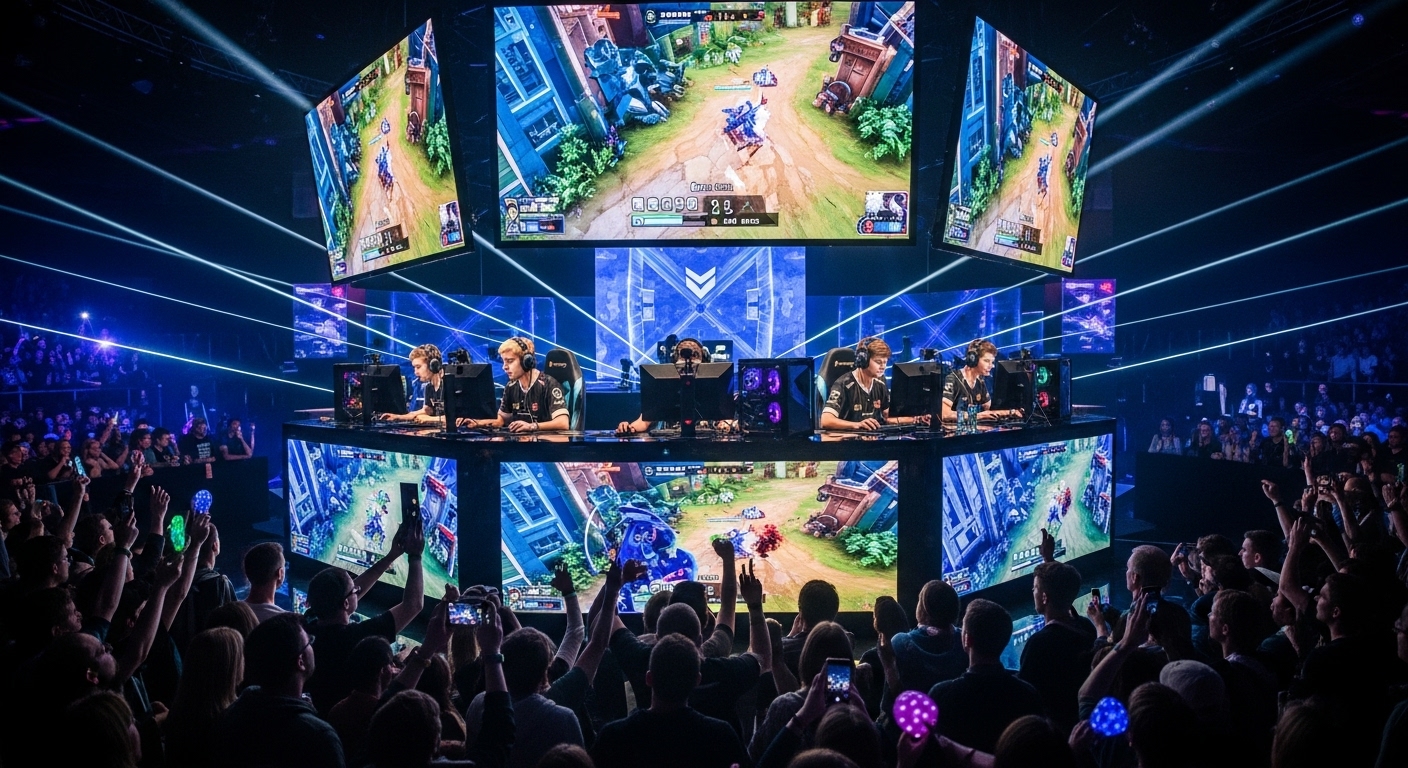Esports is one of the fastest-growing entertainment industries in the world, and while players often steal the spotlight, another vital group helps bring the experience to life — the casters and commentators. Behind every major esports event, from The International (Dota 2) to the League of Legends World Championship, you’ll find energetic voices narrating the action, providing insights, and connecting audiences to the games. This article takes you deep behind the mic to explore the world of esports casting and commentary — its history, styles, challenges, and future.
Introduction: The Power of the Voice in Esports
When you think of esports, images of pro players, massive arenas, and flashy graphics likely come to mind. But imagine watching an intense Counter-Strike: Global Offensive (CS:GO) match or a nail-biting Overwatch final without any commentary. The silence would feel strange, and the intensity would be harder to grasp. Casters transform gameplay into a narrative — they hype up the clutch plays, explain strategies, and create emotional highs and lows for fans.
In many ways, esports casting is the bridge between the game and the audience. It’s both storytelling and education, wrapped in real-time performance. As esports continues to grow, so too does the art of casting.
A Brief History of Esports Casting
To understand where esports commentary is today, we need to look back.
Early Days: LAN Parties and Amateur Commentary
In the late 1990s and early 2000s, esports was a niche subculture. Games like StarCraft: Brood War in South Korea and Quake in the West gave rise to some of the first dedicated casters. Back then, commentary was often amateur — passionate fans calling matches at small LAN parties or streaming low-quality broadcasts online.
South Korea deserves special mention. The rise of OnGameNet (OGN) and MBCGame in the early 2000s brought professional commentary to StarCraft, complete with iconic duos like Nick “Tasteless” Plott and Dan “Artosis” Stemkoski, who became legends in their own right.
The Twitch Revolution
The launch of Twitch in 2011 marked a turning point. Suddenly, esports events could reach millions of viewers worldwide, and casters had global platforms. Personalities like Anders Blume (CS:GO), Phreak (League of Legends), and TobiWan (Dota 2) became household names among fans.
Mainstream Recognition
By the 2010s, esports casting matured into a legitimate career path. Professional leagues hired commentators full-time, and casting styles became more polished, influenced by traditional sports broadcasting. Today, top casters can command large salaries, sign sponsorships, and enjoy celebrity status.
The Role of a Caster in Esports
Esports casters aren’t just narrators — they wear multiple hats. Their roles include:
- Play-by-Play Casting
These casters provide the real-time narration of in-game action. They describe plays as they unfold, inject excitement, and keep viewers on the edge of their seats. Their goal is to capture the emotion and speed of the game. Example: Anders Blume (CS:GO) or Clayton “CaptainFlowers” Raines (LoL). - Color Commentary (Analyst)
The analyst provides depth. They explain strategies, highlight player decisions, and break down why certain plays succeed or fail. Analysts add context and expertise, often being former pros themselves. Example: Sean Gares (CS:GO) or Jonathan “Reinforce” Larsson (Overwatch). - Host or Desk Anchor
While not always casting live play, hosts facilitate pre-game, halftime, and post-game discussions. They keep panels engaging and guide conversations smoothly. Example: Eefje “Sjokz” Depoortere is one of the most recognizable esports hosts. - Sideline Reporter
Some esports events feature reporters interviewing players, coaches, or fans mid-event. They bring a more human touch to the broadcast.
Together, this team ensures broadcasts are exciting, informative, and accessible for both hardcore fans and casual viewers.
Styles of Esports Commentary
Casting styles vary widely depending on the game and the personalities involved. Here are the most common:
1. High-Energy Hype
Fast-paced games like CS:GO or Rocket League demand high-energy casters who can match the adrenaline of the action. These casters shout, build tension, and explode with excitement during clutch plays.
2. Analytical and Methodical
Games with strategic depth, such as Dota 2 or League of Legends, often require more analytical commentary. Analysts slow down the pace and explain complex mechanics or strategies.
3. Humorous and Entertaining
Some casters lean on humor and personality, engaging fans with jokes, memes, and banter. This style works particularly well on Twitch, where entertainment value can be as important as insight.
4. Storytelling
Top-tier casters weave storylines across a tournament — rivalries, underdog runs, or redemption arcs. This narrative layer keeps viewers invested beyond just the gameplay.
Skills Required to Be a Great Esports Caster
Being an esports caster isn’t just about having a good voice. It’s a demanding craft that requires a blend of skills:
- Deep Game Knowledge: Casters must understand mechanics, strategies, and meta shifts to provide credible commentary.
- Communication: Clear, articulate speech is essential. The ability to explain complex moments quickly is key.
- Charisma & Energy: Audiences connect with passion. A monotone caster can kill the mood of an exciting play.
- Adaptability: Live events are unpredictable — from technical issues to unexpected plays. Casters need to stay composed.
- Teamwork: Casting is often done in pairs or trios. Chemistry between casters can make or break a broadcast.
- Stamina: Tournaments can last hours or days. Casters need endurance to keep energy high.
Challenges of Esports Commentary
Behind the glamour, casting is tough. Here are some challenges:
1. Balancing Hardcore and Casual Viewers
Some fans want detailed analysis, while newcomers need accessible explanations. Finding the balance is tricky.
2. Dealing with Criticism
Casters are in the public eye. Social media and Twitch chat can be brutal, with constant scrutiny of their performance.
3. Maintaining Energy
Casting multiple games in a row is mentally and physically draining. Losing energy mid-match can affect viewer experience.
4. Staying Updated
Games change constantly with patches and updates. Casters must keep up with evolving metas and strategies.
5. Pressure of Big Moments
Imagine calling the final play of a million-dollar tournament — your words become immortalized in esports history. The pressure is immense.
Famous Esports Casters and Their Impact
Certain casters have become icons within esports, shaping the industry’s voice:
- Tastosis (StarCraft II) – Nick “Tasteless” Plott and Dan “Artosis” Stemkoski set the standard for duo casting with their mix of humor and deep analysis.
- Anders Blume (CS:GO) – Known for his iconic voice and ability to capture the intensity of CS:GO.
- Phreak (League of Legends) – One of the earliest Riot casters, famous for his puns and deep game knowledge.
- TobiWan (Dota 2) – Legendary for his hype-filled play-by-play calls at The International.
- Sjokz (League of Legends) – A host who became a fan favorite for professionalism and charm.
These personalities remind us that casters are more than background voices — they are part of esports culture.
How to Become an Esports Caster
For aspiring casters, the path is challenging but achievable:
- Start Small: Begin by streaming on Twitch, casting smaller community tournaments, or creating YouTube content.
- Build Game Knowledge: Stay updated on meta shifts, pro strategies, and patch notes.
- Develop Your Voice: Practice enunciation, pacing, and projection. Some casters even take voice training.
- Find Your Style: Are you hype-driven, analytical, or comedic? Develop a unique persona.
- Network: Attend events, connect with tournament organizers, and collaborate with other casters.
- Get Feedback: Record your casts, review them critically, and accept constructive criticism.
The esports industry is competitive, but passionate, consistent effort can open doors.
Esports Casting vs. Traditional Sports Commentary
While esports borrows heavily from sports broadcasting, there are differences:
- Pace: Esports often moves faster than traditional sports, requiring quicker reactions.
- Game Knowledge: Unlike physical sports, video games constantly change with patches and updates.
- Audience: Esports audiences are younger and more digitally engaged, often interacting live via chat.
- Career Path: Traditional sports commentators often transition from journalism or playing careers. Esports casters frequently come from the player base or content creation.
Despite these differences, both share the same essence: enhancing the viewing experience.
The Future of Esports Commentary
The future looks bright for esports casting. As the industry professionalizes, casters will likely:
- Gain Mainstream Recognition: More casters may cross over into traditional media or become celebrities beyond esports.
- Embrace Technology: Tools like AI, augmented reality, and advanced stats will support more engaging broadcasts.
- Diversify Voices: Expect more diversity in casting teams, representing global audiences.
- Interactive Commentary: Platforms may allow viewers to choose caster styles (hype, analysis, humor) in real time.
Esports commentary will continue to evolve, but its role as the heartbeat of esports storytelling will remain.
Conclusion: Voices That Shape Esports
Esports casting and commentary are more than background noise — they’re integral to the industry’s success. Casters amplify the drama, explain the complexities, and make esports accessible to millions worldwide. Without them, the magic of esports would be incomplete.
